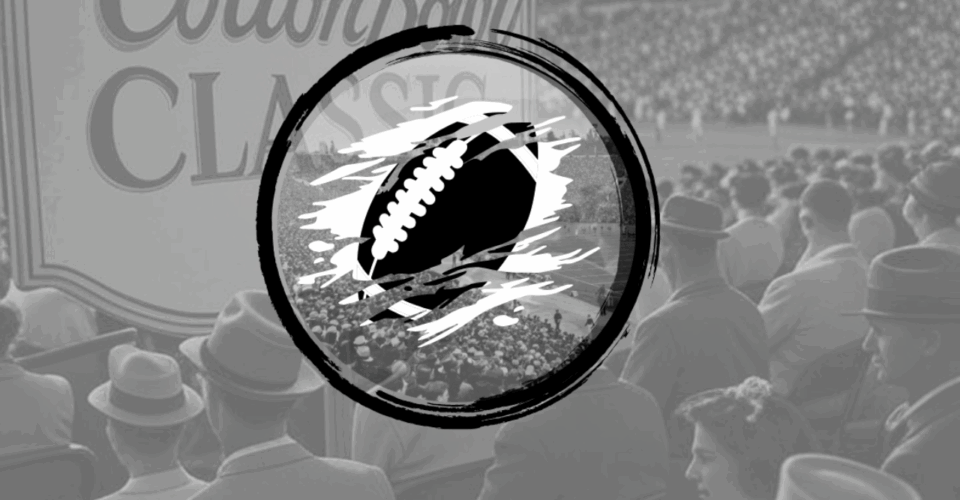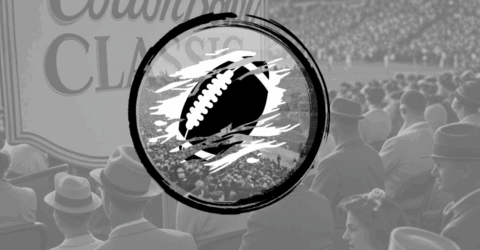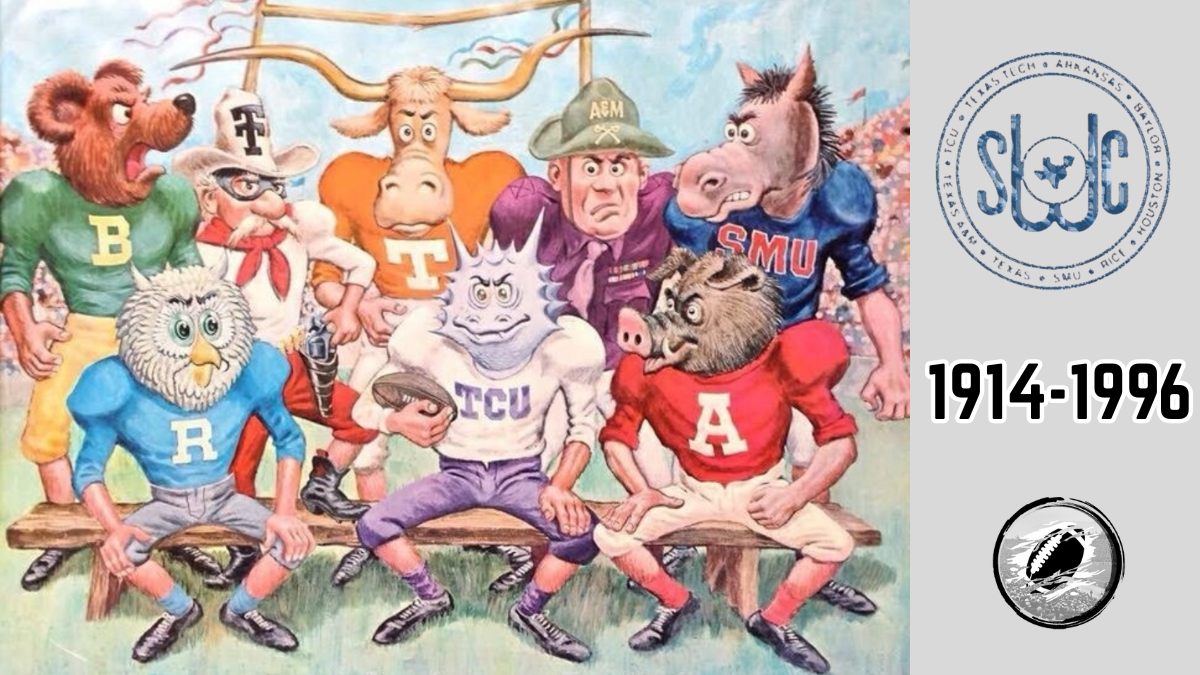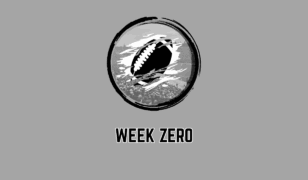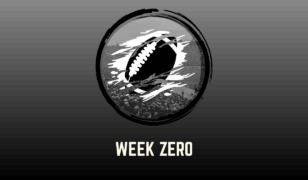The Southwest Conference (SWC) was once one of the most competitive and influential collegiate athletic conferences in the United States. Founded in 1914, it dominated college football in the South and Southwest for much of the 20th century. The conference was home to powerhouse programs, historic rivalries, and numerous national championships. Despite its prestige, it eventually dissolved in 1996 due to a combination of financial struggles, scandals, and shifting conference alignments.
The league was heavily Texas-based with all but the University of Arkansas being located within the borders of the Lone Star State in its final form. Traditionally, its football champion would play in the annual Cotton Bowl in Dallas, Texas. The Cotton Bowl remains one of the major bowl games in the sport and is part of the College Football Playoff Bowl line-up.
Timeline
1914
The SWC is founded with the following eight schools:
Arkansas
Baylor
Oklahoma
Oklahoma State
Rice
Southwestern University
Texas
Texas A&M
1916
Southwestern University leaves the SWC and joins the TIAA.
1920
Oklahoma leaves the SWC for what would become the Big 8.
1920
Phillips University joins the SWC.
1921
Phillips University leaves the SWC and becomes Independent
1923
TCU joins the SWC
1925
Oklahoma State leaves the SWC to join what would become the Big 8.
1956
Texas Tech joins the SWC
1971
Houston joins the SWC
1991
Arkansas leaves the SWC and joins the Southeastern Conference
1996
The SWC dissolves.
Texas, Texas A&M, Texas Tech and Baylor merge with the Big Eight to form the Big 12.
TCU, Rice and SMU join the Western Athletic Conference (WAC).
Houston joins Conference USA
Origins and Early Years (1914–1930s)
The Southwest Conference was established in 1914 with the vision of organizing intercollegiate athletics.
During its early years, the conference solidified itself as a regional football powerhouse. Schools like Texas and Texas A&M quickly gained national attention for their competitiveness, while Arkansas provided a strong presence from outside Texas. Rivalries between the schools soon developed, including the heated Texas-Texas A&M matchup, which would later become one of college football’s most storied rivalries. The Longhorns and Aggies renewed their series in 2024 as both are now members of the Southeastern Conference.
Golden Era of SWC Football (1940s–1970s)
The Southwest Conference truly blossomed in the post-World War II era. The late 1940s and 1950s saw the emergence of legendary teams and players. The University of Texas and Arkansas became perennial national contenders, and Rice and Baylor occasionally fielded strong teams.
One of the most significant developments came in 1960 when Texas won its first national championship under head coach Darrell K. Royal. Royal’s wishbone offense revolutionized college football and propelled Texas to dominance throughout the 1960s and 1970s. Texas would go on to win national titles in 1963, 1969, and 1970. During this era, Arkansas also produced powerhouse teams under coach Frank Broyles, winning the national title in 1964.
Meanwhile, SMU became an offensive juggernaut, particularly with their “Pony Express” backfield of Eric Dickerson and Craig James in the early 1980s. Texas A&M, led by legendary coach R.C. Slocum, emerged as another dominant force by the 1980s, capturing several conference titles and competing on the national stage.
College Football Changes, Challenges, and Scandals (1980s–1990s)
Despite its success on the field, the Southwest Conference faced significant challenges in the 1980s. The biggest issue was a series of NCAA infractions and recruiting violations. SMU’s football program was hit with the infamous “Death Penalty” in 1987, banning the team from competition for an entire season due to rampant pay-for-play scandals. This deeply damaged SMU’s football program and hurt the reputation of the conference as a whole. The Mustangs, now members of the Atlantic Coast Conference, were rendered irrelevant for nearly 30 years until making the first-ever 12-team College Football Playoff in 2024, their first as a member of the ACC.
By the early 1990s, financial disparities and media contracts began to change the landscape of college athletics. While the Southwest Conference thrived regionally, it struggled to compete with larger conferences like the Big Ten and Southeastern Conference (SEC), which had stronger national television deals. Additionally, geographic isolation limited the conference’s ability to expand and attract major television markets.
Dissolution and Legacy
By 1994, discussions about restructuring the Southwest Conference were in full swing. Several schools sought inclusion in larger conferences with national exposure, leading to the conference’s ultimate disbandment. In 1996, the Southwest Conference officially ceased to exist, and its members joined different leagues:
Current Conferences for 1990s SWC members
ACC: SMU
American: Rice
Big 12: Baylor, Houston, TCU, Texas Tech
SEC: Arkansas, Texas, Texas A&M
